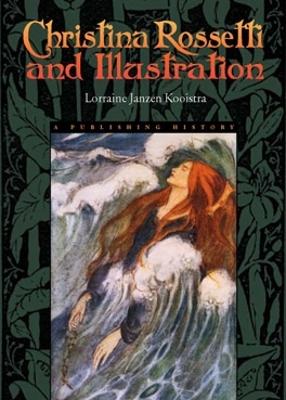Series in Victorian Studies
2 total works
In Poetry, Pictures, and Popular Publishing eminent Rossetti scholar Lorraine Janzen Kooistra demonstrates the cultural centrality of a neglected artifact: the Victorian illustrated gift book. Turning a critical lens on "drawing-room books" as both material objects and historical events, Kooistra reveals how the gift book's visual/verbal form mediated "high" and popular art as well as book and periodical publication. A composite text produced by many makers, the poetic gift book was designed for domestic space and a female audience; its mode of publication marks a significant moment in the history of authorship, reading, and publishing. With rigorous attention to the gift book's aesthetic and ideological features, Kooistra analyzes the contributions of poets, artists, engravers, publishers, and readers and shows how its material form moved poetry into popular culture. Drawing on archival and periodical research, she offers new readings of Eliza Cook, Adelaide Procter, and Jean Ingelow and shows the transatlantic reach of their verses.
Boldly re-situating Tennyson's works within the gift-book economy he dominated, Kooistra demonstrates how the conditions of corporate authorship shaped the production and reception of the laureate's verses at the peak of his popularity. Poetry, Pictures, and Popular Publishing changes the map of poetry's place-in all its senses-in Victorian everyday life and consumer culture.
Boldly re-situating Tennyson's works within the gift-book economy he dominated, Kooistra demonstrates how the conditions of corporate authorship shaped the production and reception of the laureate's verses at the peak of his popularity. Poetry, Pictures, and Popular Publishing changes the map of poetry's place-in all its senses-in Victorian everyday life and consumer culture.
Readers do not always take into account how books that combine image and text make their meanings. But for the Pre-Raphaelite poet Chriistina Rossetti, such considerations were central. This volume maps the production and reception of Rossetti's illustrated poetry, devotional poetry and work for children, both in the author's lifetime and in posthumous 20th-century reprints. The author, Lorraine Janzen Kooistra's reading of Rossetti's illustrated works reveals the visual-verbal aesthetic that was fundamental to Rossetti's poetics. Her archival research brings to light information on how Rossetti's commitment to illustration and attitudes to copyright and control influenced her transactions with publishers and the books they produced. Kooistra also tracks the poet's reception in the 20th century through a complex web of illustrated books produced of a wide range of audiences.
Analyzing an impressive array of empirical data, Kooistra shows how Rossetti's packaging for commodity consumption - by religious presses, publishers of academic editions and children's picture books, and makers of erotica and collectibles - influenced the reception of her work and her place in literary history.
Analyzing an impressive array of empirical data, Kooistra shows how Rossetti's packaging for commodity consumption - by religious presses, publishers of academic editions and children's picture books, and makers of erotica and collectibles - influenced the reception of her work and her place in literary history.

